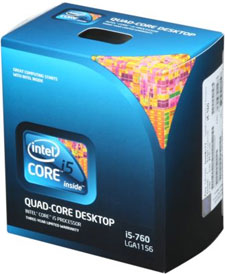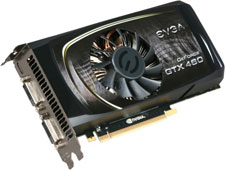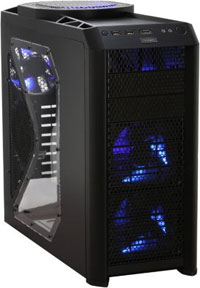Holiday 2010 System Builder's Guide
by AnandTech Staff, edited by Jarred Walton on November 19, 2010 2:00 AM EST- Posted in
- Guides
- Systems
- Holiday 2010
| Vivek's Midrange Intel System | ||
| Hardware | Component | Price |
| Processor |
Intel Core i5-760 Lynnfield 45nm (4x2.8GHz to 3.33GHz Turbo, 8MB L3, 95W) |
$200 |
| Motherboard | Gigabyte GA-P55-USB3 (Intel P55) | $120 |
| Video | EVGA GTX 460 768MB (768-P3-1360-TR) ($30 MIR) | $140 |
| Alternate GPU | ASUS GTX 460 768MB (ENGTX460 TOP)($20 MIR) | ($150) |
| Alternate GPU | ASUS Radeon HD 6850 1GB (EAH6850) | ($200) |
| Memory |
Corsair XMS3 2x2GB DDR3-1600 CL9 (CMX4GX3M2A1600C9) |
$65 |
| Hard Drive | WD Caviar Blue 1TB (WD10EALS) | $70 |
| Optical Drive | ASUS 24x DVDRW (DRW-24B1ST) | $20 |
| Power Supply | OCZ ModXStream Pro 700W (OCZ700MXSP) ($25 MIR) | $55 |
| Case | Antec Nine Hundred Two | $89 |
| Total System Price (Price based on GPU choice) | $759-$819 | |
When Jarred pitched his idea of a midrange gamer build, I liked the general idea except for one thing—the AMD processor. I'm more of an Intel guy at heart, so I tried to envision a similar midrange system built around an Intel platform. I built a very parallel system for personal use around this time last year, so I'll toss in a few anecdotes from my experience.

The processor was by far the easiest choice to make. At the price point we're looking at, the Core i5-760 makes the most sense. It's a quad-core Lynnfield running at 2.8GHz, with the only difference between it and the $280, 2.93GHz i7-860 being the clock speed bump and the lack of Hyper-Threading in the i5. Given that you've got four cores to work with, you won't miss the extra threading capabilities unless you're running some really highly threaded workloads. The 2.66GHz i5-750 is still kicking around at $199 (I can't believe that Intel has kept it at exactly the same price it was a year ago when I bought one!), but you can find the 760 for the same price. I figure it's not worth the $80 bump to the i7 line, as that money is better spent elsewhere.
For the motherboard, I went with the Gigabyte GA-P55-USB3. It's a rock solid board with USB 3.0 and a second PCI-E slot for CrossFireX support. In a mid-priced motherboard, there's not too much else you can ask for (except for maybe IEEE 1394). The Gigabyte P55 line has been popular since the launch of Lynnfield, and based on my experience I have no problems recommending it. As with Jarred's build, if you're serious about CrossFire you'll probably want to go with a different board that can do x8/x8 to the GPUs; as luck would have it, Biostar's T5 XE CFX-SLI has dual x8 slots and tosses in SLI support (via a PLX chip), and depending on the vendor it's even cheaper than the Gigabyte offering. Is it as reliable and does it have great support should something go wrong? We haven't had any serious issues with Biostar, but they can be a bit hit-or-miss.
RAM is kind of dependant on how much you need—I went with 4GB in my build last year and haven't felt short of memory, but I'm adding more this Black Friday just in case. For this build, I went with a Corsair XMS3 4GB (2x2GB) kit of DDR3-1600. Corsair's XMS3 was one of the more reasonably priced RAM kits on Newegg, but you can really go for whatever you feel comfortable with. I know a lot of people who like the G-Skill Ripjaws line, but they're rather pricey especially if you go for the 7-8-7-24 timings ($88 versus $75 for the 9-9-9-24 Ripjaws, and $65 for the XMS3s that also run at 9-9-9-24). Unless you have a specific preference for brand, you're probably better off going for whoever has the best sale.
Hard drives are another place where once you determine the capacity and speed, you're not going to get a whole lot of performance variation between different brands. I know people that swear by Seagate, I know some that swear by Western Digital, I know a lot that swear they hate either (or both), and there's Anand, who swears against hard drives on principle. In all honesty, I don't care either way, so I specced this system with the WD Caviar Blue 1TB 7200RPM drive, which at $69 is not a bad buy. There are 1TB drives from Seagate, Samsung, and Hitachi at the same price, so you're not at a loss for choice.

The graphics card is where things get interesting. If you're a serious gamer, I figure the lowest you want to go is the NVIDIA GTX 460 768MB. Most of those are going for $169, but the bog-standard EVGA GTX 460 listed above has a $30 rebate on top of that, and the more customized (and mildly factory-overclocked) ASUS ENGTX 460 comes with a $20 MIR. So if you don't mind the MIR, you can get away with a "low-end" GTX 460 for $140-150. Given the overclocking potential inherent to the GTX 460, that's a pretty good price.
But what if you want something faster? The best place to look is the HD 6850 (the 6870, at $240-300, is a bit too expensive for a midrange build). Ryan really liked the ASUS EAH6850 when he looked at the XFX, MSI, and ASUS retail HD 6850 cards earlier this month, and so it makes another appearance here. At $200, it's competitively priced against the rest of the HD 6850 partner cards, and it makes a good tradeoff between temperatures and noise. Like the ASUS ENGTX 460, it comes with a token overclock and ASUS' highly effective Direct CU cooler. It's faster than the comparably priced 1GB GTX 460 cards, so it's a worthwhile upgrade to make if you'll make use of the extra graphics horsepower on hand.
Of course, now you have to decide if you're at all interested in adding a second GPU in the future; if so, you should note that most budget P55 boards only support CrossFireX. For those going the AMD route, the specced Gigabyte board will be fine, but if you're after SLI support, the Biostar T5 XE CFX-SLI has what you need for $15 more than the GA-P55, with an epic, highlighter-esque colour scheme thrown in just for kicks.
For the power supply, I went with the OCZ ModXStream 700W. This is what I ended up buying for my build last year, and I’ve had no problems with it. There's usually a good sale on it somewhere; I picked it up for $49 last year (after a $35 rebate) and it’s currently going for $55 after a $25 rebate. I know that the Corsair line of PSUs is very popular, but they’re significantly pricier than the OCZ, as are the Antec PSUs (unless you get a combo deal on one with a case like in Jarred’s build). Generally speaking, most of the 80 Plus certified PSUs will work well; some are still better than others, but the difference between 82% and 87% efficiency isn't all that great and the price often climbs rapidly once you move beyond the Bronze level. The OCZ is a standard 80 Plus model at a good price, but if you're looking for other options the Seasonic S12II 520W is Bronze certified, well reviewed, and costs just $10 more than the OCZ.

Case choices are very personal; I prefer flowing and elegant cases, like the old Cooler Master WaveMaster and the Thermaltake Tsunami, which is what I got for my own system. I abhor the design of the wildly popular Antec Nine Hundred—something about the weirdly pentagonal side just doesn’t sit right with me, though I must admit that it is a very high quality case. The Nine Hundred Two on the other hand has a more rectangular design that suits my taste much better, but at $90 it’s not the cheapest case on the block. Jarred specced his build with the Antec Three Hundred, which is a bit smaller and a bit cheaper, but get what you like.
So how does this stack up against Jarred's build? It has a more expensive case, PSU, motherboard, and processor with a slightly slower GPU (assuming you get the standard GTX 460 768MB), but then the i5-760 will generally outperform Phenom II 965. As configured and with the mail-in rebate for the GTX 460 and PSU, the net difference is only around $30, but if we just look at the motherboard and processor the "Intel tax" is about $50 (or about 7% looking at the entire system). Whichever GPU and system you choose, both of our midrange builds will handle just about any task you might throw their way—including gaming.










112 Comments
View All Comments
Rumpelstiltstein - Friday, November 19, 2010 - link
These are all decent builds for the different price points, but I have a few suggestions for future system guides. Before I say anything else, I would just like to note that I am a big fan of your site, it is always a source of some great journalism and analysis of PC Hardware. Keep up the good work. However, when a PC Hardware site puts up a system guide, I like to use it as a source to send friends to that are thinking of building a new PC and I like to compare between different guides before deciding who to send them to. This is an area that I think you could improve in. I personally think that if you changed your approach to these guides a little bit, it would help out immensely. My model for comparison, since I have found it to be the most comprehensive guide out there is The Tech Report's system guide:http://techreport.com/articles.x/19868
This may or may not be the best example as recently released hardware has changed the game up a lot, but I think some of their guides in the past were pretty spot-on. Anyway, what these guys do is create a few budget tiers and all of the TR Staff debate over the best choice for each part, rather than assigning one person per build. I'm sure this could easily be accomplished by your editors. Sure, it might bring up some heated arguments, but I have no doubt that the final choices will be better overall. I understand that you have more builds here for a wider range of purposes, and that's great, but you can adapt this approach to accomplish the same goal. Even TR often has an alternate build every few months for a different audience. In this last one, they came up with a highly upgradable nettop-like system that is a good recommendation for those who would otherwise go out and purchase a system-in-a-box from the likes of HP or Dell.
Another thing they do is provide links to newegg, since newegg is a good place to determine the price you would likely pay for the overall build and it provides good user feedback for people to look at as well as a great wishlist system for people to plan their purchase with, whether or not they choose to do their final purchases through newegg. This is not as essential a feature, but it does help. Granted, they do have newegg's sponsorship, so they have more incentive to do this. But they have been doing it even before newegg took notice and decided to give their thumbs up.
They also put peripherals, accessories, and extras under a separate topic since these things really are very much user preference and don't necessarily depend on the system they are using them with. And of course, at the end they provide a conclusion to reflect on the changes and how the industry as a whole has changed since their last system guide to lead them to the hardware picks they have chosen for each build.
Again, I'm not suggesting you try to adhere to the formula used by another site, but there are things that can be learned by reading them. I think if you made a few of these changes, particularly the collaboration of all your staff on each build, you will provide a much better guide that more people will be apt to follow rather than just look at, have a chuckle, and do whatever they were gonna do before reading it. You will likely have less members crying "that is a horrible choice for that build, this would be better." Granted that particular person can make all the changes he wants to suit his personal preference, but they could just build their system from the ground up which would render such a guide useless. You might point a few in a better direction with a guide like this, but more knowledgeable people would likely take it with a grain of salt. I think with a better approach you can hit a larger audience with your guides. It's all about helping people make a good investment in their systems and pick good quality parts with a nice price/performance ratio within the limits of a given budget.
Iketh - Saturday, November 20, 2010 - link
Agree 100% with this... when i read the title, and then read who the author was (Anandtech staff), I thought i was gonna read about "the best of now" systems which all the authors collaborated... i was rather disappointed when i saw otherwise :(it IS fun to read about each author's particular taste (and hence get to know them a little better), but you can better demonstrate this if each system is chosen as a team, and then break down, in the explanation, what one author was fighting for in a particular build over another and the ensuing carnage :)... THAT would be fun to read, as well as explaining why eventually one part was chosen over the other
benrico - Friday, November 19, 2010 - link
This is a 32 nm chip... Improperly identified in the mid HTPC build.ERDoc - Friday, November 19, 2010 - link
The one system I'm waiting to build is a large NAS. Something with 20 drives, RAID 6, Blu-ray disc player for backing up my content and serving to multiple HTPCs. WHS Vail or Server 2008 would likely be the OS of choice. 2 x SSD RAID 0 as system drives. Now that 3TB drives are available (soon), are there any server boards will support SATA 6Gb/s, 3 TB drives? I was thinking a Norco 4220 as the case. Any other suggestions? Same for for processors (will be transcoding on the fly, 8 to 10 separate output streams True HD)?Dual GB ethernet at minimum. There are companies such as Vidabox selling systems like this for $10k to $15k. I think I could build a better system (with 2 TB drives) for less
Any other suggestions?
hglazm - Friday, November 19, 2010 - link
No. Stop right here. Do not, DO NOT do these. They are never unbiased, they are rarely good to suit users needs, they direct a tremendous amount of consumers to products they dont need or are too underpowered for, and they will end up degrading you into the likes of TomsHardware.Just stay the fuck away from these, guys. Don't do it.
hglazm - Friday, November 19, 2010 - link
Also, what the hell is up with recommend the Antec BP series?Stuffs a load of crap.
JarredWalton - Friday, November 19, 2010 - link
What are you talking about? This was a Holiday Buyer's Guide and we figured it would be nice to give everyone a voice for a change of pace. This is not intended to be the way we do buyers' guides going forwards, but instead is a large article that covers a huge swath of possibilities in time for Black Friday.As for the BP550, can you point me to any good review that shows it's a "load of crap"? The word on the street is that it's a decent Delta-built power supply. Is it the best PSU out there? No, but if you can pick it up for $35 with the current $30 combo at Newegg with the Antec Three Hundred case, it's a heck of a lot better than most other $35 PSUs. Best info I can find suggests there's nothing wrong with the BP550 (unless you're anti-Antec I suppose).
Bad_Wolf_Online - Friday, November 19, 2010 - link
I have a dual x5680 system, Brian asked for pictures and benchmarks how do I contact him?http://dl.dropbox.com/u/4974831/Cinebench_R11.5%28...
http://dl.dropbox.com/u/4974831/Windows_Task_Manag...
Ryan Smith - Saturday, November 20, 2010 - link
brian@ you know the rest.Hrel - Friday, November 19, 2010 - link
I think this is the best bang for you buck, period.https://secure.newegg.com/WishList/MySavedWishDeta...